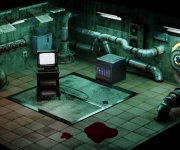Castle of Temptation
Castle Of Temptation places the player in a mysterious stronghold where every room tests both instinct and restraint. The castle is filled with hidden dangers disguised as rewards, inviting players to make choices that seem harmless but lead to unexpected consequences. Progression is not linear, and each level of the structure introduces new traps, looping corridors, and unpredictable outcomes. The player is not given clear instructions, and the game relies on observation, deduction, and memory to reveal its rules.
Interacting With a Living Space
The environment in Castle Of Temptation changes based on player behavior. Doors may appear or vanish depending on which path was taken previously. Objects touched too many times can become cursed, while ignored elements might unlock secret exits later. Each decision alters the space slightly, creating a version of the castle unique to that playthrough. The deeper the player ventures, the more the architecture seems to respond intentionally, blurring the line between place and presence.
Game Systems and Exploration Tools
To survive and navigate, the player must learn how to use and recognize several systems:
- Timed pressure plates that shift room layout
- Keys that only work after specific conditions are met
- Hazards triggered by backtracking through the same path
- Rooms that require stillness or silence to remain stable
- Passageways that change depending on item possession
These mechanics form a puzzle-like structure where trial and observation build the knowledge required to move forward.
Shadows, Silence, and False Guidance
Castle Of Temptation avoids traditional storytelling, using sound, architecture, and environmental detail to create tension. Incomplete murals, broken texts, and repeating symbols suggest a deeper history but never confirm its meaning. Light may act as a lure rather than a guide, and safe-looking areas often serve as setups for misdirection. The game uses ambiguity as a weapon, forcing players to act slowly and interpret each space as part of a larger, shifting pattern.
Mastery Through Caution
There is no map or permanent inventory in Castle Of Temptation. What the player brings to each new attempt is not gear but knowledge. Remembering a hallway’s trick or recognizing a reused layout from a previous failure becomes more useful than any item. Progress is measured in small victories—unlocking a new path, avoiding a known danger, or solving a previously misunderstood pattern. With no enemies in plain sight, the castle itself remains the most complex and unpredictable opponent.







































































